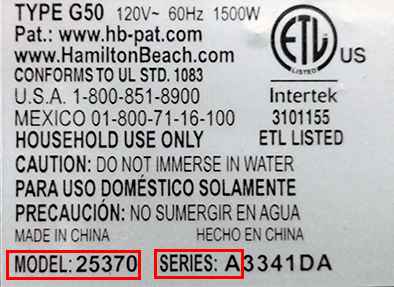NO, use only clear water in the reservoir unless directed otherwise in the Use & Care instructions.
NO, use only clear water in the reservoir unless directed otherwise in the Use & Care instructions.
To protect the soleplate from scratches, never iron over buttons, zippers, metal rivets, or snaps.
To clean starch build-up and other residue from the SilverStone® soleplate (feature found on selected models), unplug the iron and allow it to cool. With iron in upright position, clean the nonstick surface with a warm, sudsy cloth or sponge; wipe dry.
DO NOT USE any abrasive cleaners or metal scouring pads as they may damage the nonstick surface.
To clean starch build-up and other residue from the Smooth Glide aluminum soleplate, unplug iron and allow it to cool. With iron in upright position, clean the soleplate with a damp cloth or sponge and a paste made of baking soda and water.
DO NOT USE abrasive cleaners or metal scouring pads as they will scratch the smooth surface.
The full-size weighs about 2 lbs. 4 oz; the lightweight iron weighs about 1 lb. 6 oz.
The light is a power on light, and it will remain on while unit is plugged into a power outlet. ALWAYS UNPLUG THE IRON AFTER USE.
Store the iron in the upright position, never wrap the cord around the iron and empty all water from the iron. It is best not to store the iron in dust prone areas such as a laundry room where dust can settle in the opening of the water reservoir; dust will eventually cause blockage and prevent the iron from steaming.
Pumping the "Blast of Steam" button will cause the chamber to flood and the unit will leak or drip water from the vents. Press button twice, allow the blast of steam to evaporate, then repeat.
Tap water is recommended because it has minerals in it that actually "season" internal parts. However, in hard water areas, use a combination of bottle and tap water.
Some irons have an Automatic Shutoff feature. There are several ways the automatic shutoff feature works. Try the following:
The average iron light pulls .001 total amps.
The iron must preheat for 5 minutes to allow the thermostat to stabilize, and it must be set on the proper temperature for the type of fabric you're ironing.
Several things can contribute and cause this problem: 1) Sole plate is not hot enough 2) Defective steam valve allowing to much water into the sole plate 3) Using distilled or soft water in the iron. [we need to expand and tell the consumer how to determine if the soleplate is not hot enough or whether the valve is defective]
Nylon 240F, Silk 275F, Polyester 310F, Rayon 330F, Wool 360F, Cotton/Linen 375F. Remember: The average temp. may vary 15 degrees F (+ or -)
Leaving water in the iron when not in use may result in rusty looking steam.
Accumulation of minerals in water can block steam vents, preventing water from dripping into the steam chamber.
First, try pumping the "Spray" button several times to "prime the spray." If this doesn't resolve the issue, the intake tube may be clogged or there may be a kink in the intake tube.
None. We recommend against making any type of "repair."
Model number, type number, series code and wattage information is located on the rating label. The rating label is located on the heel (end) of your iron.
Watts are determined by multiplying the amps by the volts.
The amps are determined by dividing the volts into the watts. Example: volts= 120, watts=1000, therefore 1000 divided by 120 = 8.3amps.
None. We recommend against making any type of "repair." There are no replacement parts for irons.
Stay up-to-date on the hottest food trends with our blog, discover a new favorite dish with recipes from our Test Kitchen, access your account, and so much more.
Interested in receiving emails, recipes and tips?
